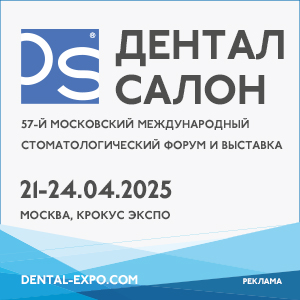Glass-ionomer cement from TehnoDent in the dental practice
Downloads
Abstract
Nowadays, the most popular and actively used restorative materials in dentistry are materials having the adhesion to the tooth’s hard tissues. Among them the most popular are the glass ionomer cements (GIC). On the dental market there are glass ionomer cements in both import and domestic production, whose quality is not inferior and sometimes superior to their foreign counterparts. However, imported glass ionomer cements are not always available because of its price. In this connection, I would like to draw Your attention to GIC, ‘Polyacrylin’ of the company TehnoDent (Russia). This article briefly describes the history of the GIC, the interaction mechanisms of GIC with hard tooth tissues, mechanisms of etching and conditioning, and domestic glass ionomer cement ‘Polyacrylin’, its characteristics and indications for use and clinical examples of usage; showing that this material is a competitive alternative to expensive foreign analogues, available to a wide circle of dentists.Key words:
glass-ionomer, dental caries, tooth fillinFor Citation
[1]
Anurova A.E., Kosyreva T.F., Shchegoleva V.D., Roschin D.S. Glass-ionomer cement from TehnoDent in the dental practice. Clinical Dentistry (Russia). 2016; 3 (79): 22—25
References
- Анурова А.Е. Неинвазивные методы лечения кариеса зубов у детей с расщелинами губы и неба. - Российский стоматологический журнал. - 2006; 3: 41-2.
- Инструкция по применению «Комплекта стоматологического модифицированного полиалкенатного материала «Полиакрилин» для реставрации». - РУ № РЗН 2015/2855 от 15.07.2015 г.
- Каталог продукции ТехноДент «Стоматологические материалы», 2016.
- Базикян Э.А. (ред.). Пропедевтическая стоматология: учебник для медицинских вузов. - М., 2008. - 768 с.
- Hashimoto M., Ohno H., Endo K., Sano H. Oguchi H. Resin-tooth adhesions interfaces after long-term function. - American J Dent. - 2001; 14: 211-5.
- Hume W.R., Mount G.J. In vitro studies on the potential for pulpal cytotoxicity of glass-ionomer cements. - J Dental Res. - 1988; 67: 915-8.
- Mount G.J. An Atlas of glass-ionomer cements: a clinician’s guide. - London: Martin Dunitz, 2001. - 201 p.
- Mount G.J. Адгезия стеклоиономерных цементов. - Новое в стоматологии. - 2003; 4: 52-5.
- Mount G.J. Современный рынок стеклоиономерных цементов. - Новое в стоматологии. -2003; 2: 73-7.
Downloads
Published on
September 1, 2016











